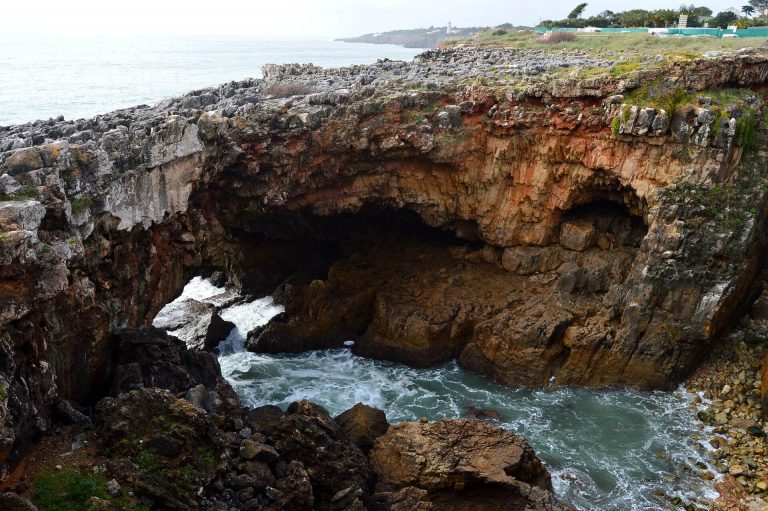Points of interest
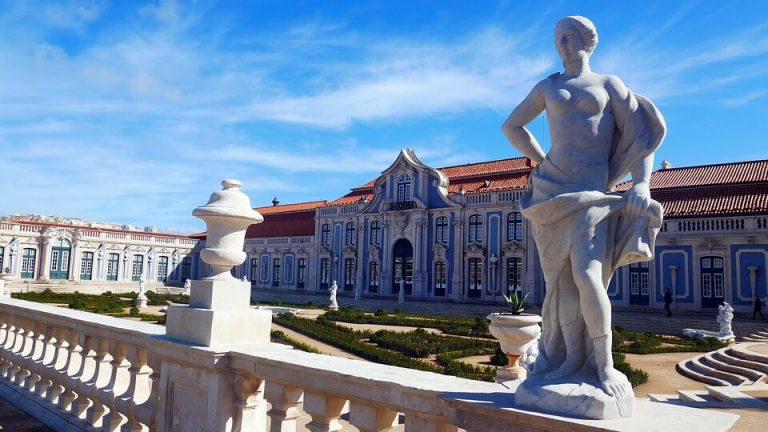
Park and Queluz Palace
The National Palace of Queluz charms whether for its imposing nature or the sheer exuberance of its architectural details closely bound up with the lives of three generations of the Portuguese Royal Family and the scene of intense emotions. The Palace furthermore reflects the evolution in the tastes and styles over different period, moving from the Baroque to the Rococo and onto Neoclassicism.
Its surrounding scenic gardens invite you for a “stroll” through a period in which the court organised sumptuous parties and that hold the memories of trips by gondola along the canal, theatre, hunting, musical and literary performances, masked balls, games and open-air recitals.
National Palace of Sintra
Located in the centre of Sintra, defining its landscape with the unmistakeable silhouette formed by its two conical chimneys crowning the royal kitchen, there stands the only palace that spans the entire history of Portugal.
The current Palace of Sintra emerges out of many royal palaces. This is a set of buildings that were constructed, added and adapted over the course of many centuries with the actual date of the founding of the country’s oldest palace a question that still remains to be resolved. In all likelihood, the first building was constructed in around the 10th or 11th century when Sintra was under Moorish rule.
At the end of the Middle Ages, the Palace of Sintra was at the heart of a large territory under the care of the Queens of Portugal while also one of the preferred destinations for Portuguese monarchs. The abundance of hunting in the region, the freshness of the climate during the summer months and the need to take refuge during periods of plague in the capital all contributed to turning the Palace of Sintra into a regular destination.
A guardian of memories and witnessing some of the most defining episodes in the history of Portugal, the Palace of Sintra provides its visitors with the opportunity to take a tour through time and set out in search of other lives so very different to our own.
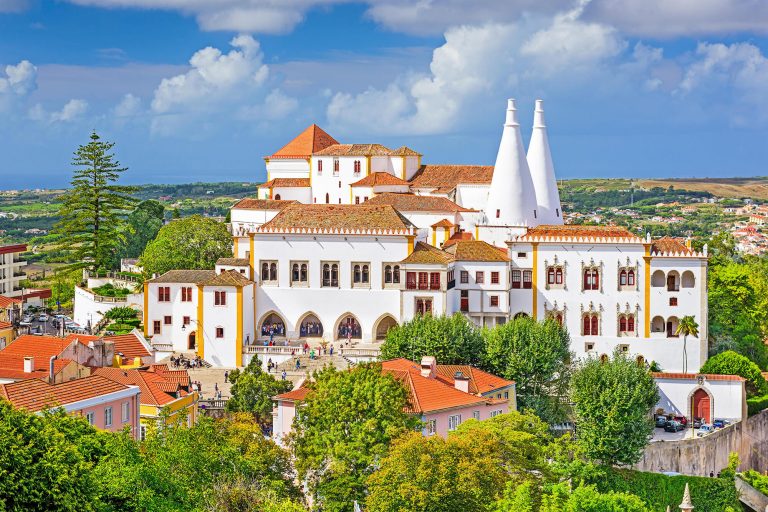
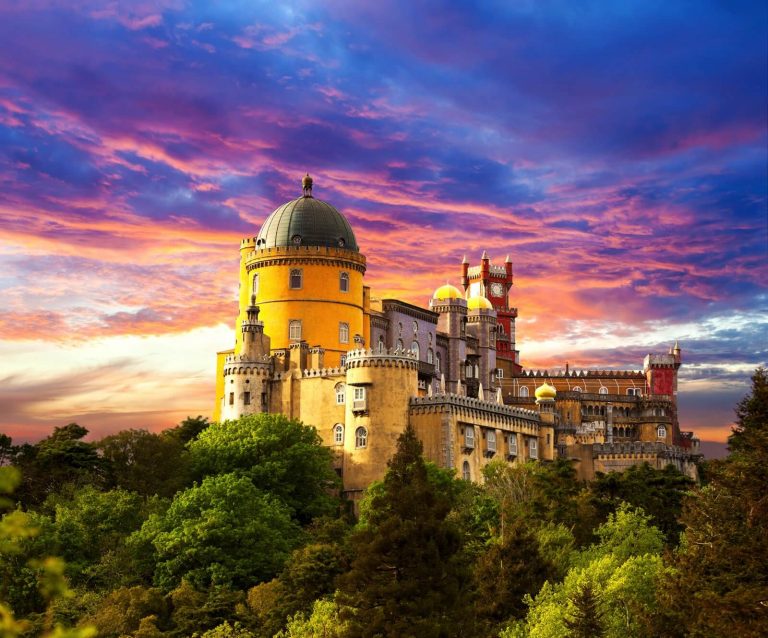
Park and National Palace of Pena
The Palace of Pena was classified as a National Monument in 1910 and ranks as the single most important site in the Cultural Landscape of Sintra, classified by UNESCO as World Heritage in 1995.
The Palace is a Romanticist castle completed in 1854. It is situated on a top of a hill above the town of Sintra and can be easily spotted from Lisbon on a clear day. The national monument known for its architectural features and vast forested park welcomes thousands of visitors every year, it’s like a sacred jewel that crowns the Serra de Sintra. The surrounding park establishing an idyllic scenario, frequently hidden under the veil of the mists that characterise the Sintra Hills.
As if having stepped out of a fairy tale, this has been the place of dreams for all the generation who have passed here and gazed upon its magnificence.
Chalet and Garden of the Countness of d’Edla
After major restoration works in the wake of a fire that partially destroyed it, this building was opened to the public. It preserves the memory of one of the great love stories of Portuguese history and is included in the visitor route of the monumental complex of the Pena Park, in the Serra de Sintra, the first Cultural Landscape classified as Heritage of Humanity by UNESCO.
It was built according to the model of alpine chalets in vogue in Europe in the second half of the nineteenth century by the king consort D. Fernando II for the Countess of Edla, a classical singer with whom he fell in love and would marry in a second marriage in 1869, 16 years after the death of Queen D. Maria II.
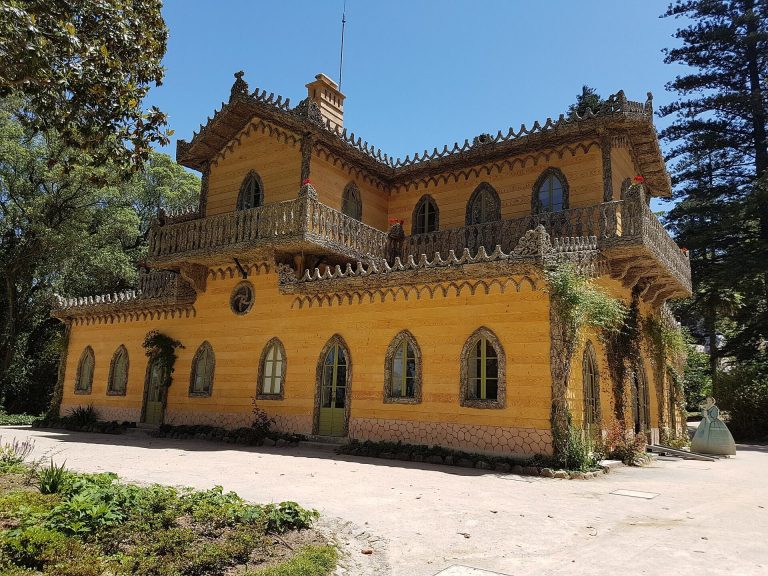

Moorish Castle
Isolated on its lofty perch, one of the peaks in the Sintra Hills, the Moorish Castle is a fortification founded in the 10th century during the period the Moors occupied the Iberian Peninsula.
Its famous walls snake across the hills with their granite blocks interlinking boulders and cliffs.
Its parapet walk provides stunningly unique views out over the town, the Palace of Pena and, further in the distance, the greens of these hills contrast with the blues of the Atlantic Ocean.
Park and Palace of Monserrate
A retreat for writers, Monserrate attracted numerous international visitors, especially among the British, who praised its beauty in their travel accounts and engravings. When Francis Cook, a rich, 19th century British industrialist and a great art collector, visited here, he was fascinated. From this passion there emerged a masterpiece of Romanticism: the Park and Palace of Monserrate.
Francis Cook put his dream into practice in transforming Monserrate into what we know today, with its exuberant gardens – capable of amazing visitors with the exotic species sourced from every corner of the world –, and a palace that represents a true ode to romantic architecture, the refined taste of Francis Cook and the genius of its architect James Knowles Jr., who combined various different influences here.


Quinta da Regaleira
Located in the Old Quarter of Sintra and classified as World Heritage by UNESCO, Quinta da Regaleira was built at the end of the 19th century in the spirit of romanticism and its ideals.
This ensemble of enigmatic structures and luxurious gardens is a reflection of the philosophical and initiatic pursuits of the owner, António Augusto Carvalho Monteiro (1848-1920) and the talented scenographer-architect Luigi Manini (1848-1936).
More than just another tourist trap, a trip to Quinta da Regaleira is a journey into an imaginary universe of symbolism and metaphor.
Biester Palace
Is located in the heart of Sintra, being a part of the lavish scenic landscape which enabled the village to become the famous world capital of Romanticism.
Erected in the last decades of the 19th century, the building was designed by the firts portuguese architect José Luiz Monteiro, and decorated by the best artists of the period, namely Luigi Manini and Leandro de Souza Braga, amongst others. The wealth of stylistic influences it exhibits results in a whole of great historical and artistic importance, perfectly merging with the Romantic spirit of the surrounding landscape, whilst simultaneously asserting as a great expression of late century modernity, highlighted by a leading functional approach, and by the audacity of its decorative programme.
The Palace is surrounded by the majestic Biester Park, a true Eden of rare and exuberant arboreal species, brilliantly conceived by French landscapist François Nogré, in which the dewy verdant areas and watercourses flourish, moreover favoured by the existence of two magnificent viewpoints from where it is possible to sight the Moors Castle, or enjoy a stunning view all the way through to the sea.

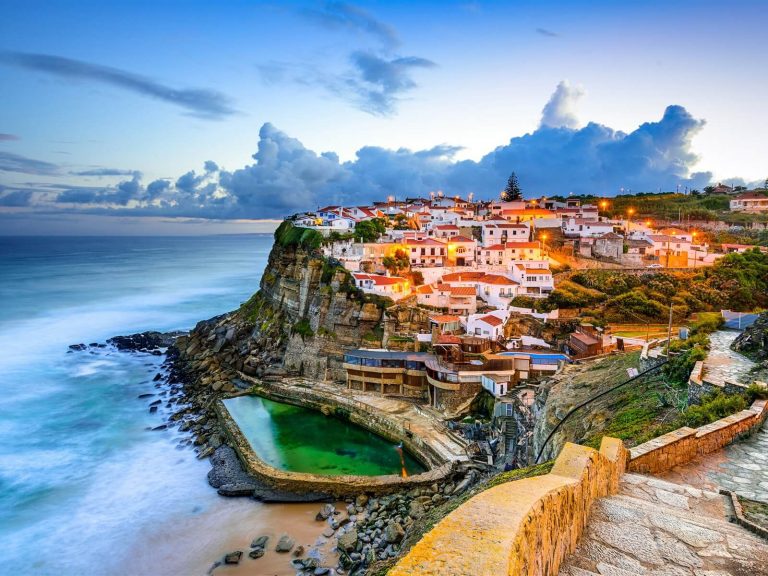
Azenhas do Mar
A real illustrated postcard, Azenhas do Mar takes us by surprise with its geographical location, the houses cascading down the cliff slope to the sea, bathed in an idyllic white light.
It is one of bathers’ most sought-after beaches, with an ocean swimming pool that delights visitors. There is no sand above 30 meters, and it may disappear completely during high tides.
Cabo da Roca
Standing at the most westerly point on mainland Europe, Cabo da Roca provides an unrivalled panoramic view out over the immensity of the Atlantic Ocean. The imposing lighthouse, with its tower finished in white tiles and with a red walkway, stands out as one of the oldest in Portugal.
In the immediate vicinity of the lighthouse, there is the emblematic cross with its homage to Luís de Camões: “Right here, almost at the head’s summit, Of all Europe, the Lusitano Kingdom, Where the earth ends and the sea begins, And where Apollo settles into the Ocean” (The Lusíadas, Canto III, Luís de Camões). It was this position, at the end of the known earth, that turned Cabo da Roca into a sacred and legendary place which continues to amaze those who visit.
The Cabo da Roca lighthouse is one of the oldest in the Portuguese coast, included in the list of six lighthouses ordered to be built by the charter of February 1, 1758, by the Marquis of Pombal. Its operation started in 1772 and is currently the second oldest in the coast of Portugal. See more information in the National Maritime
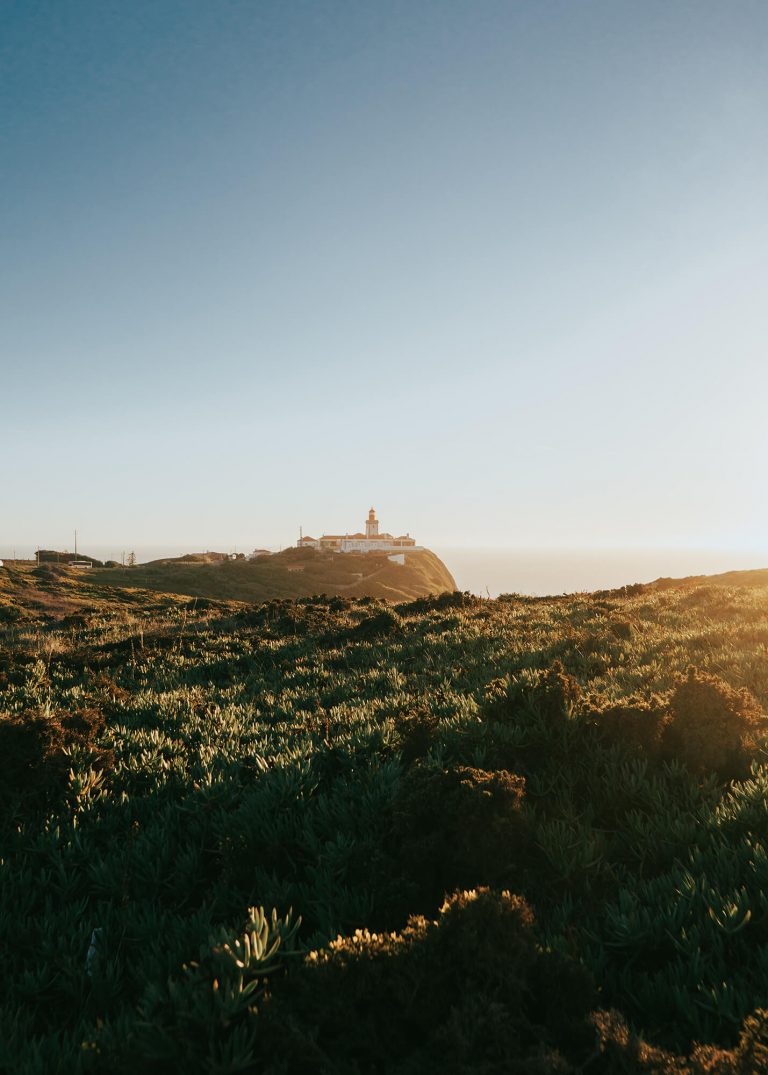
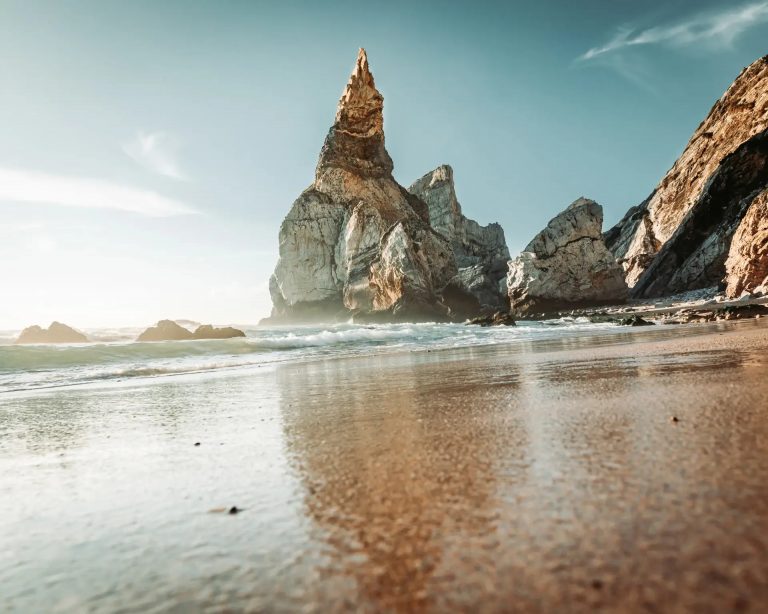
Praia da Ursa
If you’re looking for seclusion and tranquillity, then Praia da Ursa would be the beach for you. Located a just little north of Cabo da Rocha, mainland Europe’s most westerly point, this sandy cove has a dramatic and wild beauty. The rock stacks and islets, which battle with the waves offshore, are a popular subject for photographers. One such rock formation lends the beach its name.
The huge Rocha da Ursa (Bear Rock) is reputed to resemble a bear with a cub on its lap. Its pristine and untouched nature is due to its remoteness. The path which winds down the hill from the car park can take up to an hour, which would pose problems for those with mobility issues. However for the adventurous who dare to make the trek are well rewarded by the spectacle of one of Portugal’s most beautiful beaches.
“Mouth of Hell”
Is a scenic cliff formation located west of Cascais, Portugal. It gets its name from the rough ocean waves which crash against the cliff face, forcing their way into a cave system, and spraying angrily from an opening above.
The cave has been a tourist attraction for centuries. One of the first “actuality films”, A Sea Cave Near Lisbon (1896), was shot from inside the cave to showcase the majestic waves pouring in.
Boca do Inferno is better known as the place where Aleister Crowley, the famed astrologer, magician, and occultist faked his death in 1930. With the help of poet Fernando Pessoa, he was able to give the appearance of a suicide
Today, there is a small white plaque mounted on the rock commemorating the event. It tells the story of the pseudocide and provides the text of Crowley’s suicide note: “Não Posso Viver
Sem Ti. A outra ‘Boca De Infierno’ apanhar-me-á não será tão quente como a tua” which translates roughly to “Can’t live without you. The other mouth of hell that will catch me won’t be as hot as yours.” That might be touching if any of it were genuine.
